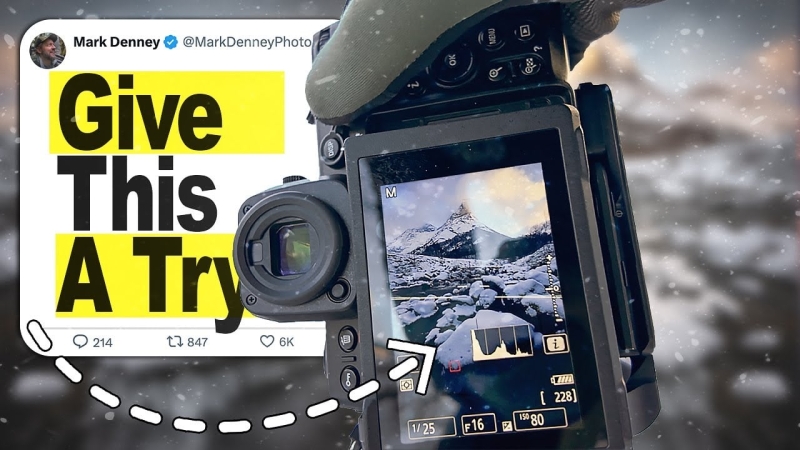Contents
Landscape photography is an art that requires patience, creativity, and the right gear. Getting the perfect shot often requires both patience and tenacity, braving the elements, and returning multiple times to a location at different times of the year. That patience often pays off, however, to make the most of your time outdoors, you do also need to have an understanding of your gear, and ultra wide angle lenses are not always the easiest to shoot with.
In this video, landscape photographer Mark Denney explores Norway, and gives us his advice on shooting landscape photos with very wide angle lenses.
The Right Gear for the Job
Mark’s adventure in Norway began in the stunning Lofoten Islands. His gear of choice? A wide-angle lens, which is essential for capturing expansive landscapes and creating a sense of depth. Wide-angle lenses, typically ranging from 14mm to 35mm, allow photographers to include more of the scene in the frame, making them ideal for dramatic landscapes like those in Norway.
Mark also emphasized the importance of a sturdy tripod. When shooting in low light or using slower shutter speeds to capture motion in water, a tripod ensures sharp, blur-free images. Additionally, he relied on a polarizing filter to reduce glare and enhance the colours of the sky and water, a must-have for landscape photographers.
Mastering Camera Settings
One of the key takeaways from Mark’s session was his approach to camera settings. While shooting a snow-covered creek with icicles in the foreground, Mark used an aperture of f/16 to ensure a deep depth of field, keeping both the foreground and background in focus. He set his shutter speed to 1/25th of a second to capture the motion of the flowing water, creating a silky effect that added dynamism to the image. His ISO was set to 320, balancing exposure without introducing too much noise.
Mark also highlights the importance of focus stacking in complex scenes. By taking multiple shots with different focus points and blending them in post-processing, he ensured every element of the composition was sharp. This technique is particularly useful when dealing with intricate foregrounds, like the snow-covered rocks and icicles in his shot.
Creative Techniques for Stunning Compositions
One of Mark’s favourite techniques is “shooting for the crop.” Instead of framing the shot perfectly in-camera, he leaves a little extra space around the edges. This allows for more flexibility during post-processing, enabling him to crop and adjust the composition as needed. It’s a simple yet effective strategy that has saved him from regretting tight-framing decisions later.
The Power of Patience and Variety
Landscape photography often requires waiting for the right conditions. Mark spent hours waiting for the clouds to clear, revealing the mountain peak. During this time, he experimented with different shutter speeds to capture the movement of the water in the foreground. He took a variety of shots, from faster shutter speeds that froze the water’s motion to slower speeds that created a dreamy blur. This approach ensures he has options to choose from when editing, rather than relying on a single shot.
Mark also stresses the importance of shooting both vertical and horizontal compositions. While he initially framed the shot horizontally, he later switched to a vertical orientation to emphasize the mountain’s height and the creek’s flow. By capturing both, he gave himself more creative options for the final image.
Final Thoughts and Tips
- Invest in a Wide-Angle Lens and Tripod: These are essential tools for capturing expansive landscapes and ensuring sharp images.
- Experiment with Settings: Play with aperture, shutter speed, and ISO to achieve the desired effect, whether it’s a deep depth of field or motion blur in water.
- Shoot for the Crop: Leave some extra space around the edges of your frame to allow for cropping and adjustments in post-processing.
- Capture Variety: Take both vertical and horizontal shots, and experiment with different shutter speeds to give yourself more options later.
- Be Patient: Wait for the right light and conditions, and be ready for unexpected moments that can transform your shot.
Mark’s passion for photography is contagious, and his practical advice is a goldmine for anyone looking to improve their landscape photography. Check out the entire video below:

